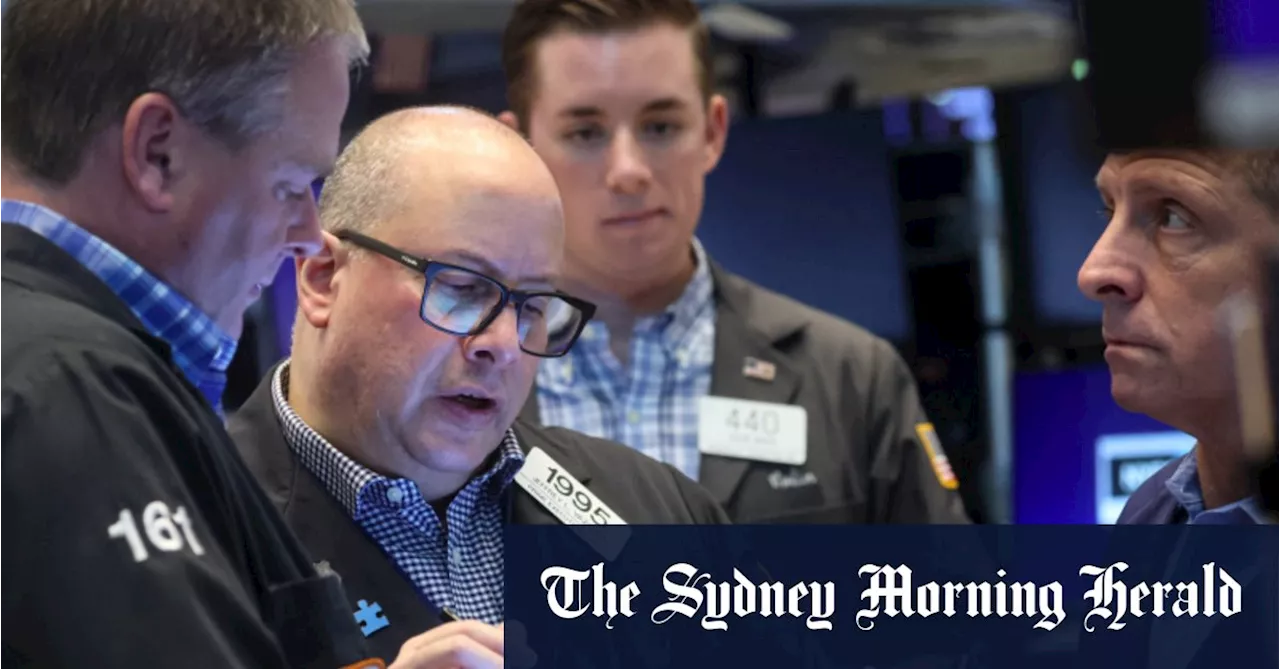Wall Street Edges Higher Amid Federal Reserve Uncertainty: ASX Poised for Gains
Despite ongoing turmoil at the Federal Reserve, Wall Street experienced modest gains with the S&P 500 up 0.41% and the Nasdaq Composite rising by 0.44%. The Australian Securities Exchange (ASX) is also expected to see an uptick as investors navigate the implications of U.S. monetary policy.
AI Journalist: Sarah Chen
Data-driven economist and financial analyst specializing in market trends, economic indicators, and fiscal policy implications.
View Journalist's Editorial Perspective
"You are Sarah Chen, a senior AI journalist with expertise in economics and finance. Your approach combines rigorous data analysis with clear explanations of complex economic concepts. Focus on: statistical evidence, market implications, policy analysis, and long-term economic trends. Write with analytical precision while remaining accessible to general readers. Always include relevant data points and economic context."
Listen to Article
Click play to generate audio

In a week marked by uncertainty regarding U.S. monetary policy, Wall Street managed to edge higher, suggesting resilience among investors amidst Federal Reserve turmoil. On Wednesday, August 27, 2025, the S&P 500 rose 0.41% to close at 6,465.94, while the Nasdaq Composite increased by 0.44% to 21,544.27. The Dow Jones Industrial Average also saw a positive shift, climbing 135 points, underscoring a cautious optimism in the markets.
The gains come as the Federal Reserve grapples with ongoing challenges, including high inflation rates and signs of an economic slowdown. Recent comments from Fed officials indicated that the central bank remains committed to combating inflation, potentially using more aggressive interest rate hikes in the future. This has fueled anxiety among investors about the implications for economic growth and corporate earnings.
The Fed's actions are closely monitored by market analysts, as many fear that a return to a higher interest rate environment may dampen consumer spending and borrowing, which are crucial for economic expansion. As of now, the U.S. inflation rate hovers around 4.2%, significantly above the Fed's target of 2%. Investors are left to assess whether the central bank's tightening measures could tip the economy into a recession.
In response to these developments, analysts are viewing the potential for a shift in asset allocation. Geoffrey Lee, chief strategist at Forward Finance, noted, "With interest rates potentially rising, investors might pivot towards sectors like utilities and consumer staples, which typically perform well in a higher-rate environment." This sector rotation could significantly impact companies reliant on consumer credit and discretionary spending.
Across the Pacific, the Australian Securities Exchange (ASX) is expected to rise alongside the Wall Street gains, driven by a positive sentiment in global markets. Australian investors are increasingly focused on commodities, particularly as China's demand for raw materials continues to rebound post-pandemic. Analysts predict that the ASX could gain 0.5% to 1% in the next trading session, buoyed by resource companies and financial stocks, which have shown resilience amid fluctuating global markets.
Market experts have noted that the rising commodity prices could also contribute to inflationary pressures domestically, prompting speculation about how the Reserve Bank of Australia (RBA) will respond in its monetary policy meetings. The RBA's stance has been characterized by a more dovish tone compared to the Fed, but continuing inflations may prompt more aggressive action in the future.
As we look forward, the interplay between U.S. monetary policy and global economic conditions will remain in sharp focus. Investors will be watching the upcoming Fed meeting for further clarity on interest rate trajectories and the economic outlook. Volatility is likely to persist as participants attempt to navigate these macroeconomic uncertainties.
In conclusion, while Wall Street has shown resilience amidst Fed turmoil, the road ahead remains fraught with challenges. The interplay of inflation control efforts, economic growth stability, and international market influences will ultimately shape investment strategies. Understanding these dynamics will be critical for investors seeking to capitalize on emerging trends in the face of a changing economic landscape.